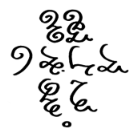Leaderboard
Popular Content
Showing content with the highest reputation on 06/25/2022 in all areas
-
Hey, this is a new one. I just added sheet music, so if you want to play it, you can play it now! 🙂1 point
-
This is an old piece I dug up from many years ago. It was 32 bars long and lasted about 40 seconds so the whole second half was composed recently on the model of the first 32 bars. Let me know what you think - I added some dynamics so it's not always nice and quiet and lullaby-ish. Warning - heavy use of whole-tone scales included, although it does occasionally cadence in more traditional triads.1 point
-
1 point
-
1 point
-
Think I might name this piece "Carnival Of Mystery". Although there's a slot machine with that name apparently!1 point
-
Thanks for your feedback! Indeed, I don't follow the tempo too strictly. Because I change the tempo often, I decided not to go with the broad tempo markings such as 'Adagio' because then I wouldn't know how to indicate the various different tempos accurately. And I do use the 'meno' for dynamics, maybe it is redundant in some places indeed. Usually I use the decrescendos to indicate dynamic changes within a phrase and the dynamic markings for the general marking of the section, I don't know if that's the usual convention though, so it may be confusing! François1 point
-
I attached an automatic generated sheet music to this topic. I used a Kontakt library.1 point
-
I believe this is a hybrid of late baroque and early classical. My writing for the bassoon here is influenced by Zelenka, as well as Michel Corrette. I think for the composition competition held in my local jurisdiction I will compose a suite in this style. I have until next year to prepare for this. I hope you enjoy and any feedback would be appreciated.1 point
-
Thank you for posting the score! I didn't really understand the level of sophistication and variation present within this piece until I followed along with the score. I love that you changed key at the end - it had a very bittersweet effect and changing the key or ending on a non-tonic chord is something I've been trying to do more in my own music. I also love the variation in figuration you included within the piece while still keeping the melody familiar (meas. 74 and onward). Thanks for sharing!1 point
-
I think it may be possible to put an "Sost." or "Sost. Ped." attached to the typical pedal line to clarify. Probably anyone who tried performing it would have guessed it anyway. 👍1 point
-
Hi @PeterthePapercomPoser ! It's in this folder https://drive.google.com/drive/folders/16N9qZAntuYOvr3T25gvllaVN9VqxogKk just click on Memories 🙂1 point
-
Thanks! Yes it should definitely be playable. It's basically just a bunch of parallel thirds LoL. I guess I should have included this in the score somehow although I don't know what the notation looks like for this but those measures are supposed to be performed with the help of the sostenuto pedal (letting the notes depressed at the beginning of the measure continue to ring while the staccato notes on beat 2 and 3 are played). Thanks for your informed remarks!1 point
-
I kind of like it despite of the warning, it's simple yet I'm not sure if it's entirely playable. Is it meant to be? There are measures like 16 & 48 where I believe it's not possible to perform what the score says without pedalling (and that'd kinda break the stacatto). That said, my favourite part is the set M(16-24) or M(48-56) (they're in essence the same 8-bar phrase but transposed, assuming I read correctly). Kind regards!1 point
-
The melody on the right hand is very cantabile up to almost min 2, I like it. Is it human or digitally interpreted? There's a bit of mess in the transition to the brief major section, which I like too. Did you make a score of this that I could read, doing that while listening to the piece is always more fulfilling to me than just a listen. In any case, keep with the good work! Kind regards.1 point
-
We all can toil and fail And sometimes get unfairly thrown in jail When have we not known that life Can be full of adversity and strife? We're an incarceration nation With plenty of unfair discrimination The powerful have often used intimidation To silence our independent declaration That the toils of yesterday will not be in vain We will not hide our faces in shame We will grow from our pain And tomorrow will see a brand new day again Both this piece and this poem are inspired by Susan Burton's memoir "Becoming Ms. Burton". She has founded an organization that helps formerly incarcerated women when they are released from jail or prison meet their many needs and requirements. This time my excuse for not using Reaper is that I don't yet have any guitar, electric guitar, or bass and drum set VST's. The instrumentation is for Flute, Oboe, Horn in F, Distorted Guitar, Overdrive Guitar, Acoustic Guitar, Drum Set, and string orchestra minus Contrabasses which are replaced by a 5 string Electric Bass. I tried to make the drums sound as natural, yet unobtrusive as I could given that I don't usually write for drum set (if you have any critiques about that please share). Thank you for listening and I hope you enjoy!1 point
-
I really enjoyed this. It reminds me a little of the flavor from the Arabian music tracks on Runescape 3. But this is more adventurous, particularly in complexity.1 point
-
Reminds me of yann Tiersen's work for piano in places. I feel as if a character bumbling through life is being depicted. It is both playful and somber. Thank you.1 point
-
Many thanks for your review! The glissando section I was referring to, was actually the part from 0:48 to 1:04. There are actually only two tracks: glass pad and timpani. The church organ-like sound is all coming from the glass pad. I might try your suggestion to introduce the timpani earlier, underneath the synth. The drum passages were designed to build tension as I'm tiptoeing around the haunted house, before something scary jumps out at me!1 point
-
Agree with PeterthePaperComposer - the score seems dense and cluttered. Careful revamping of the dynamics might help. I mean, Stravinsky's Rite of Spring is pretty cluttered but he achieves balance in the performance. The 'main' thematic material is clear and obvious. But as you say you need to work on the scoring itself. Probably best to take a copy of it just for rendering and force the dynamics to your aural intentions. Then produce an audio file but present it with the original score. One possibility is turning the florid runs in the woodwind down a bit. Another is to make the melody lines more market/louder relative to the rest. Some doubling at the octave above may also help. Played in musescore it's impossible to read the score without much scrolling up and down. Even on a tall screen to see the full score means the page has to be very thin, so I can't really comment on your orchestration. As I say it may work with adjustments to the balance.1 point
-
It's hard to separate the actual musical content in this piece from the various pyrotechnics and scalar runs. Upon first hearing the piece, the orchestration makes it sound unfocused and diffuse thematically. I know that in the score it says that you have sopranos, altos, tenors and basses, but in the performance I don't hear any voices. Instead I hear strings but no Violin I, II, Viola, Cello or Bass parts. Because of this, I'm not sure what your intent is regarding the instrumentation. Also, if you intend to write for voices you're spreading them real thin by splitting them 4 ways in certain places. Usually strings will be the bottom-most section in an orchestral score but it looks like you have percussion at the very bottom. I feel like you filled your piece up with too many 16th (and in general - fast) notes . Maybe you feel like you have to do that to give the piece a forward rhythmic drive and excitement, but I think you might be putting too much emphasis on effect and not enough on the actual musical content of the piece. Your ideas follow one another without really seeming connected to each other and the piece doesn't end but just stops. Usually you can tell a piece of music is well structured when the listener can tell that the end is coming up soon because the musical ideas will direct the listeners expectations but that doesn't happen here. Although, on the positive side you definitely seem to have talent and a cornucopia of musical ideas. I think bringing a sense of thematic unity and variety to your ideas would make them more coherent. Thanks for sharing!1 point

.thumb.png.8b5b433a341551e913a34392660bc95b.png)


